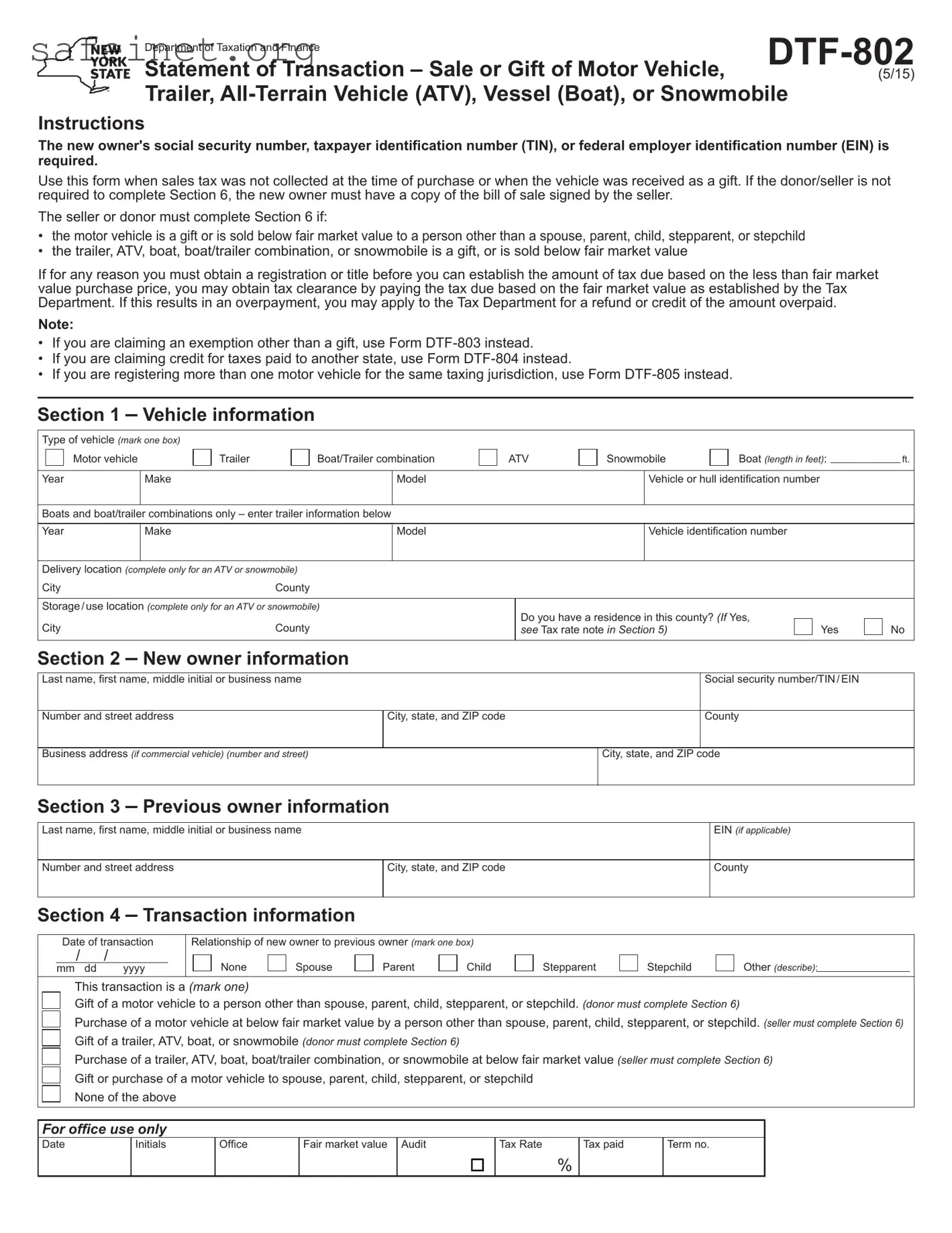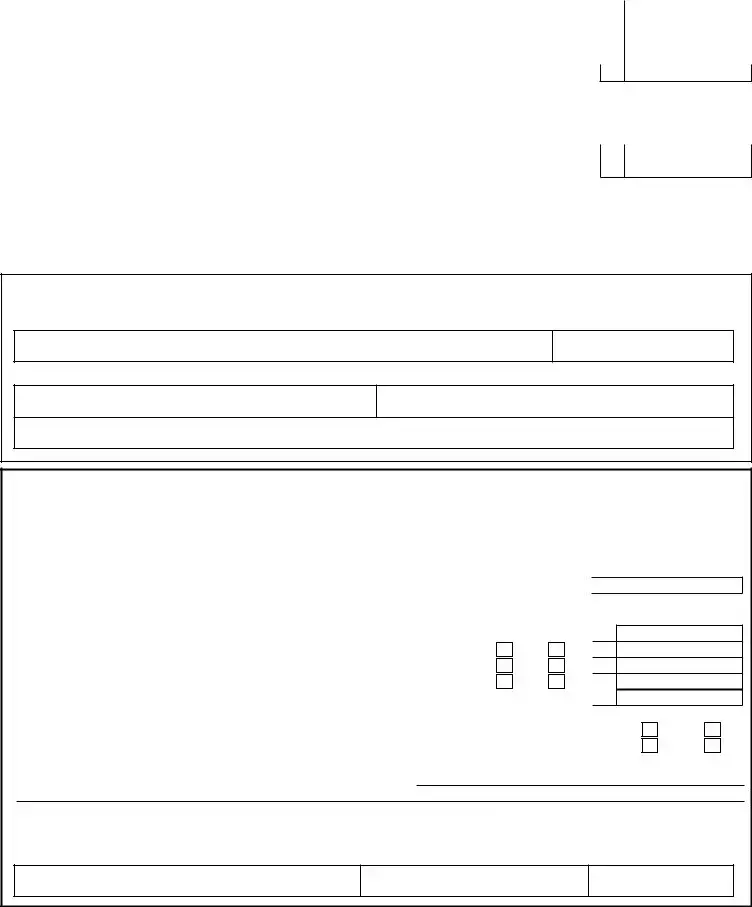The BOS DTF-802 form, often a vital part of the tax process, shares similarities with several other documentation types related to financial reporting and compliance. Each of these documents serves specific purposes but also intersects with the functions and requirements outlined in the DTF-802. Understanding these connections can help individuals and businesses navigate their obligations more effectively.
One particularly similar document is the IRS Form 1040, which individual taxpayers use to report their income and calculate their tax liability. Like the BOS DTF-802, the Form 1040 requires detailed financial information about income, deductions, and credits. Both documents ultimately aim to ensure accuracy in tax reporting and compliance, though the 1040 is focused on personal income tax while the DTF-802 may pertain to broader financial analysis or reporting requirements.
The W-2 form, issued by employers to employees, captures wages and tax withholding information. This document is crucial for accurate income reporting, just as the DTF-802 is essential for certain tax calculations or compliance tasks within businesses. Both forms involve reporting crucial financial information to tax authorities and are used to verify income and tax obligations.
Another similar document is the 1099 form, which is used for various types of income other than wages, salaries, or tips. Freelancers and independent contractors often receive a 1099 to report their earnings. This form shares the aspect of detailing specific income streams and their tax implications, akin to certain sections of the BOS DTF-802 that may request similar information from businesses or individuals.
The Schedule C (Form 1040) allows self-employed individuals to report income or loss from their business. This document, like the BOS DTF-802, enables a clear presentation of financial activity, helping to capture the essence of a business's performance. Both forms are integral for accurately reporting earnings and expenses, informing tax authorities about a taxpayer's financial health.
Another document is the Form 941, the Employer's Quarterly Federal Tax Return. Employers use this form to report income taxes, Social Security tax, and Medicare tax withheld from employee paychecks. Just as the DTF-802 collects pertinent financial data for evaluating tax situations, Form 941 helps ensure that employers are accurately reporting payroll taxes and complying with federal requirements.
The K-1 form, used to report income, deductions, and credits from partnerships, shares a common objective with the BOS DTF-802. Each document serves to inform the tax authority about the financial results of a partnership or business entity. Both K-1 and DTF-802 require detailed financial information, ensuring accurate reflection of earnings and losses attributed to each member or stakeholder.
The Sales Tax Return form is designed for businesses to report sales tax they have collected from customers. Like the DTF-802, this return provides tax authorities with essential information about a business's financial dealings, specifically concerning taxation. Both documents are critical in ensuring compliance with tax obligations and contribute to the overall financial health of a business.
Finally, the Form 990 assists non-profit organizations in reporting their financial information to the IRS. Similar to the DTF-802, the Form 990 provides transparency about financial activities to ensure compliance with regulatory requirements. Both documents aim to foster accurate financial reporting and accountability, whether for a profit or non-profit entity.


